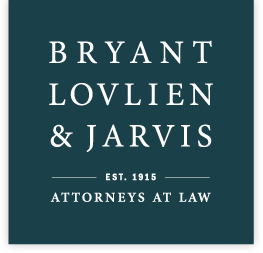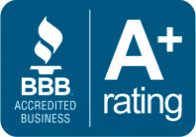In 2019 the Oregon legislature passed House Bill 2005 establishing the Oregon Paid Family and Medical Leave (“PFML”) insurance program. The PFML went into effect on January 1, 2023.
PFML is a state-run program outlined in ORS chapter 675B. The program will provide eligible Oregon employees 12 weeks of paid time off for qualifying family, medical or safety reasons each benefit year. Employees with limitations related to childbirth or pregnancy may be eligible for an additional 2 weeks of paid leave under program.
The PMFL program, which will apply to all Oregon employers with one or more employees working in Oregon, will be funded by a trust fund managed by the Oregon Employment Department (“OED”). All employees and large employers (i.e., employers with 25 or more employees) will be required to contribute to the fund. Small employers (i.e., employers with fewer than 25 employees) will not be required to make contributions, but may elect to do so. Employer size is determined by the number of all employees, including full-time, part-time, seasonal, temporary, remote, and out-of-state employees.
Contributions will commence on January 1, 2023. Employees will contribute 60% and employers will contribute 40% of the total contribution rate. The total contribution rate for 2023 is 1% of wages up to $132,900. Employees may begin applying for PMFL benefits on September 3, 2023.
Reasons for Leave under PFML
An eligible employee may take paid time off under PFML for family, medical or safety reasons. Family leave is provided (1) for the birth of a child, (2) to bond with a new child after birth, adoption, or foster placement, or (3) to care for a defined family member with a serious health condition. Family leave may be taken within the first 12 months after the birth, adoption, or placement of a child. Additional leave (limited to two weeks) is provided for issues related to pregnancy for a birthing parent. Medical leave is provided for an employee’s own serious health condition (as defined by ORS 659A.150). Safe leave is provided for survivors of sexual assault, domestic violence, harassment, and/or stalking to obtain legal or law enforcement assistance, seek medical treatment, recover from injuries, obtain counseling or support services, and/or relocate or take other steps to secure the health and safety of the employee and/or their dependent child.
Employer Obligations
All employers (regardless of employer size) are required to deduct the employee contribution (60% of the 1% contribution rate) from employee paychecks beginning January 1, 2023. Large employers (25 or more employees) must also contribute the employer portion (40% of the 1% contribution rate).
It is important to note, the employer is not responsible for the administration of paid leave under the PFML program (i.e., paying employee wages when an employee is on PFML leave). An employee desiring to take leave under PFML will apply directly through OED, not through the employer. After receiving an application for paid leave benefits, OED will decide whether to grant or deny it. If the application is granted, OED will determine the weekly benefit amount payable to the employee. The amount of pay will be a percentage of the employee’s average weekly wage. During the employee’s leave, OED will pay the employee’s weekly benefit amount directly to him or her.
All employers (regardless of employer size) will be required to continue existing health benefits for an employee receiving paid leave under PFML, until the employee’s paid leave expires. Additionally, PFML leave will be protected, meaning an employer may not discriminate or retaliate against any employee for reasons related to PFML. If an employee who takes leave under the PFML program has worked for the employer for at least 90 days preceding the commencement of his or her leave, the employer must reinstate the employee to his or her original position (if the position still exists) at the end of the employee’s leave. Employers may require 30 days' prior written notice for foreseeable leave and notice within 24 hours of an unforeseen absence. Employers may also require an employee provide verifying documentation specific to the type of leave requested. An employer who requires notice must outline the notice requirements in a written policy.
Employers may elect to cover all or part of the employee’s required contribution as an additional benefit to the employee. Additionally, small employers who elect to pay the employer portion of contributions are eligible for assistance grants from the PFML program to help cover the costs of replacement workers or other significant wage-related expenses (e.g., overtime or training costs).
Equivalent Plans
An employer can seek exemption from the PMFL program if the employer maintains an employer-offered benefit plan that provides benefits equal to or greater than the benefits provided through the PFML program. Such a plan, called an “equivalent plan,” is subject to approval by OED. Equivalent plans can be either (a) self-administered by the employer, or (b) administered by an approved insurance company. If OED approves an employer’s equivalent plan, the employer will not be required to participate in the PMFL program, and the employer’s employees will apply for paid leave benefits directly through the employer or insurance company (as the case may be). To be exempt from the January 1, 2023 contribution start date, employers must submit either an equivalent plan application or a Declaration of Intent to develop an equivalent plan to the OED no later than November 30, 2022.
OFLA, FMLA, Paid Sick Leave and PFML
Oregon employees must take PFML leave at the same time as leave through the Oregon Family Leave Act (“OFLA”) and the Family and Medical Leave Act (“FMLA”) if the qualifying reasons for taking leave are the same. Under this circumstance, the leaves will run concurrently up to a maximum of 16 weeks of combined paid and unpaid leave per year, or 18 weeks if the employee experiences a pregnancy-related disability.
It is important to recognize that PFML benefits are separate from and in addition to Oregon’s paid sick leave law, vacation leave, or other paid leave earned by the employee. An employer may permit an employee to use paid sick time, vacation leave or any other paid leave accrued by the employee in addition to receiving PFML benefits to “top off” the eligible employee’s average weekly wage during a period of leave taken for family leave, medical leave, or safe leave.
Employers must provide notice to employees of the PFML program so that employees are aware of the paycheck deduction beginning January 1, 2023. Additionally, employers must post a notice informing employees about PFML program, including the employee’s rights, how to file a claim, and notice that the employee’s job is protected. A model notice is posted here on the Oregon Paid Leave website.
This summary is not intended to be an exhaustive discussion of the Oregon PFML program. If you are an employer and would like more information about the PFML program, including the necessary updates to your employee handbook and paid leave policy, we encourage you to contact our office.

